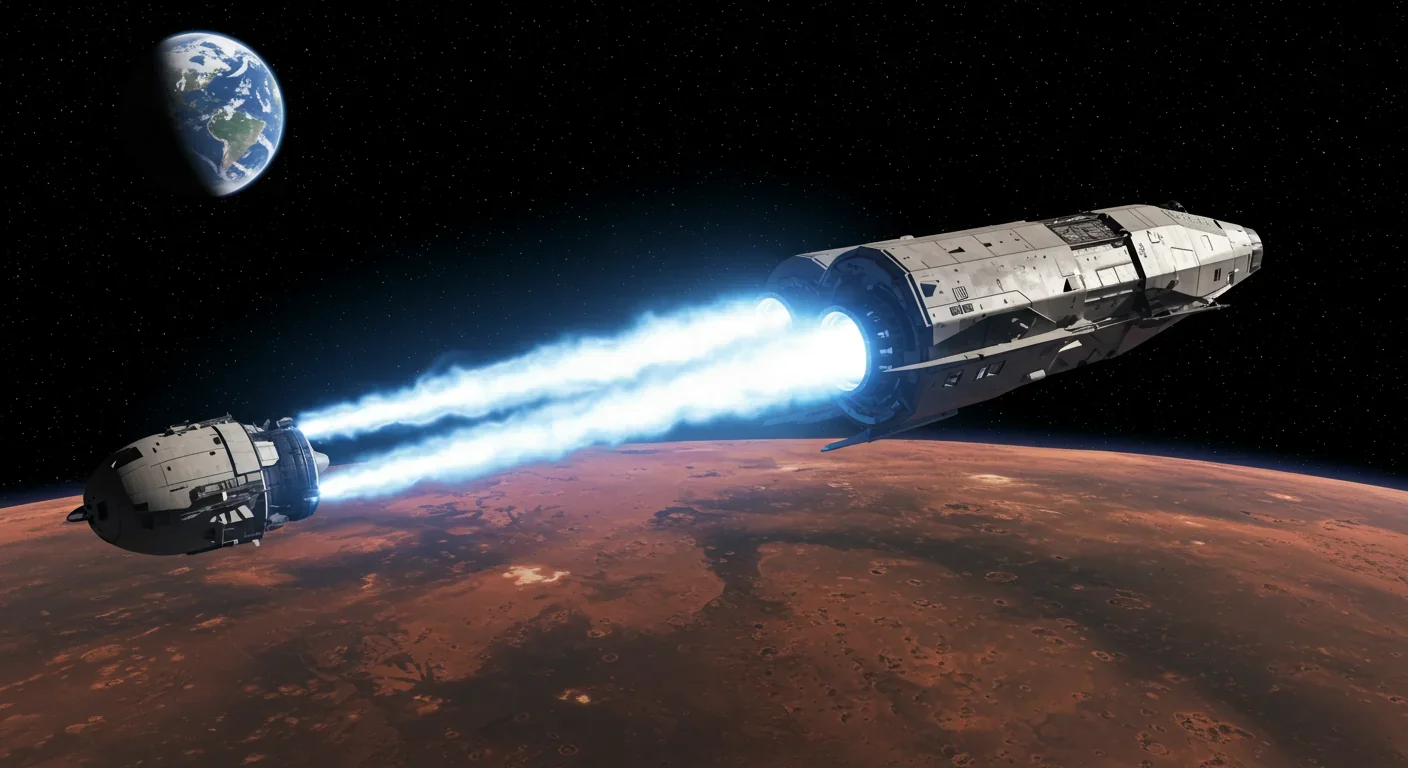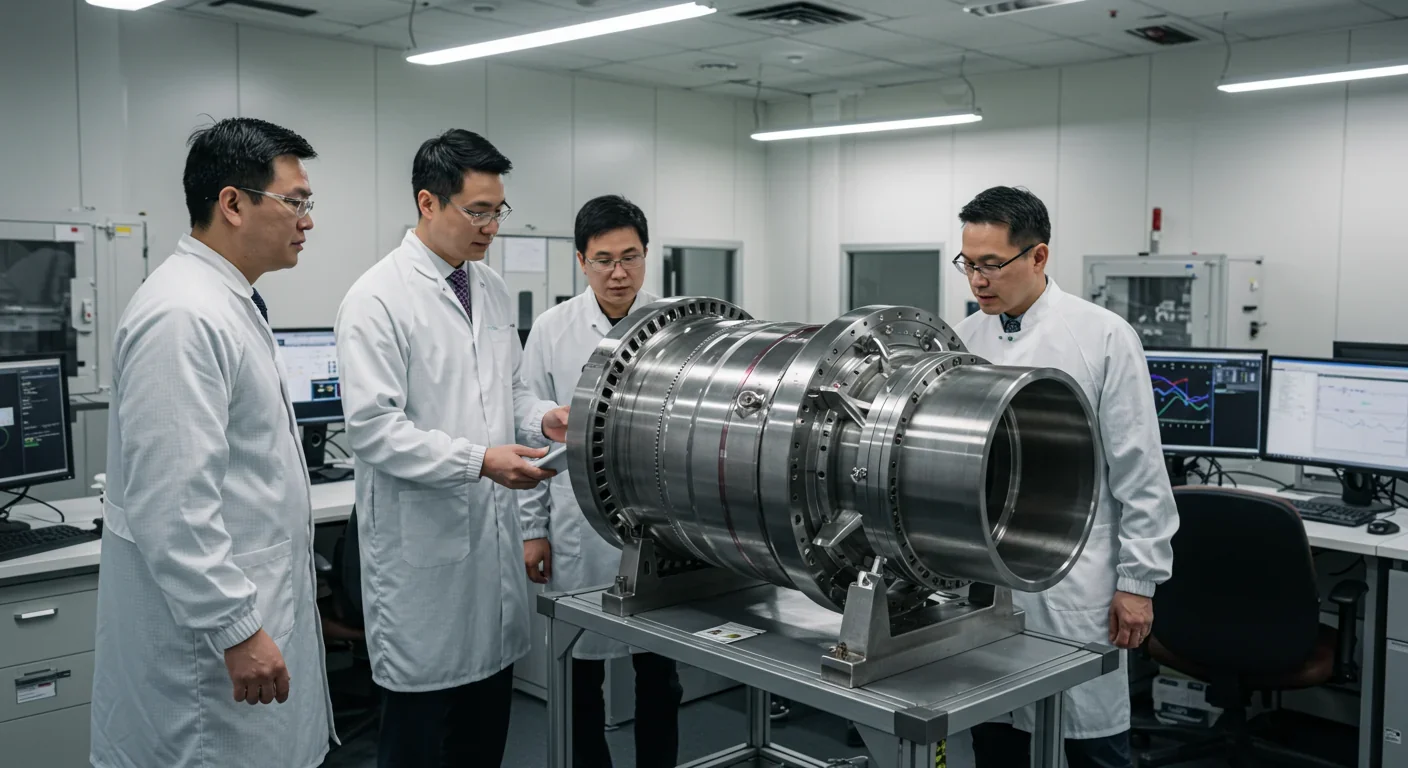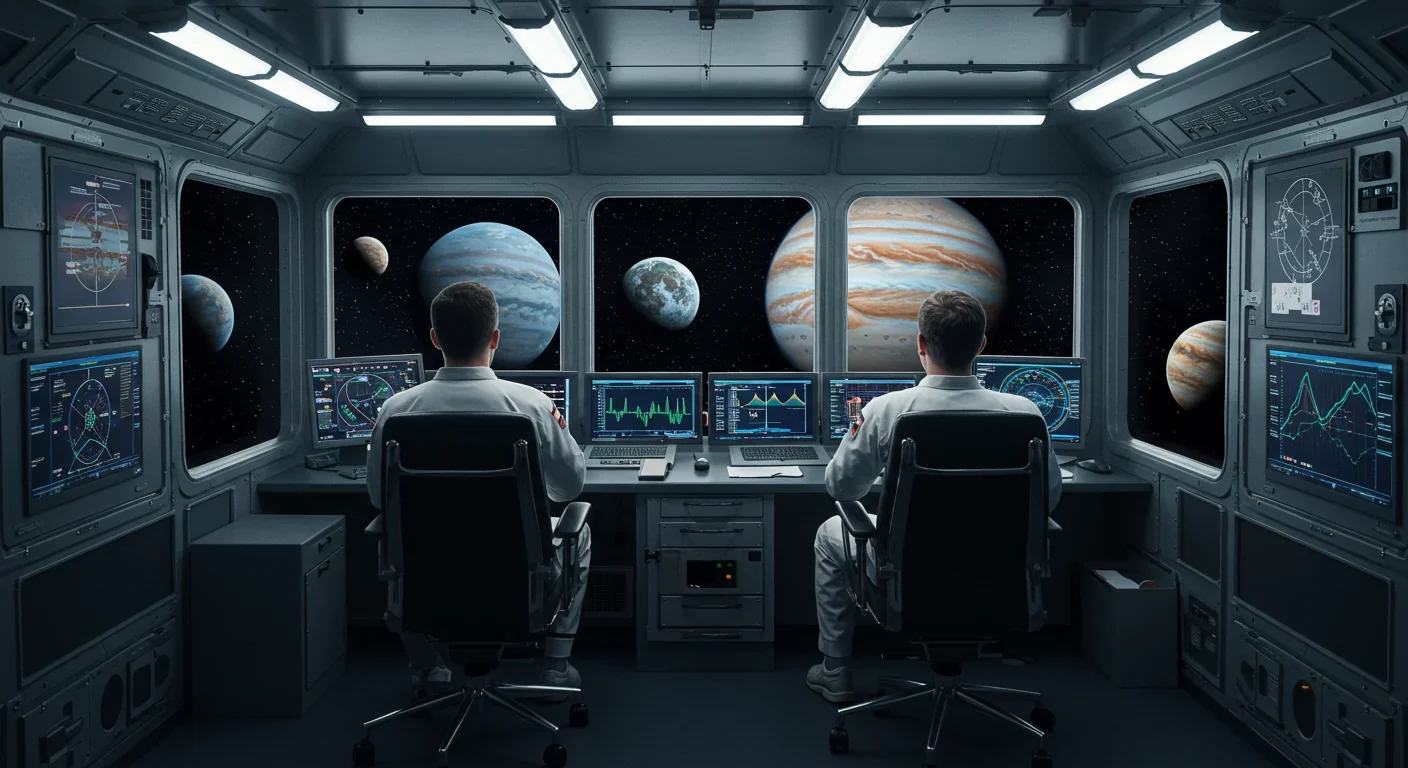Fusion Rockets Could Reach 10% Light Speed: The Breakthrough

TL;DR: Nuclear propulsion could cut Mars transit times in half and make the outer solar system accessible, with NASA and private companies now racing to deploy technology proven feasible in the 1960s but abandoned for political reasons.

By 2040, humanity could be routinely sending crews to Mars in half the time it takes today. The key isn't bigger rockets or more fuel—it's switching from chemical combustion to nuclear energy. After decades of research, nuclear propulsion is moving from Cold War blueprints to active development, with NASA, DARPA, and private companies racing to make the physics work.
The promise is extraordinary. While today's chemical rockets can achieve a specific impulse of around 450 seconds (a measure of thrust efficiency), nuclear thermal systems tested in the 1960s already reached 900 seconds. Modern designs promise to go even higher, potentially doubling efficiency again. That translates to faster missions, smaller spacecraft, and the ability to reach destinations like Jupiter and Saturn that remain barely accessible with current technology.
Nuclear propulsion works by replacing chemical combustion with nuclear fission. Instead of burning fuel, a reactor heats hydrogen propellant to extreme temperatures and expels it through a nozzle. The physics is simple: hotter exhaust means higher velocity, which means more thrust per kilogram of propellant.
Nuclear thermal rockets from NASA's NERVA program in the 1960s proved this concept worked. Engineers fired up reactors that heated hydrogen to over 2,000 degrees Celsius, achieving specific impulse values twice those of chemical engines. The tests succeeded, but political priorities shifted and the program ended.
Today's designs go further. Ohio State's Continuous-Wave Nuclear Thermal Rocket (CNTR) uses liquid uranium instead of solid fuel rods, potentially doubling efficiency yet again. The liquid fuel flows continuously through the reactor core, heating hydrogen propellant without the material stress that limited earlier designs.
There's also nuclear electric propulsion, which uses a reactor to generate electricity for ion thrusters or plasma accelerators. These systems achieve specific impulse values of 3,500 to 6,000 seconds, though with much lower thrust. They're ideal for cargo missions where speed matters less than fuel efficiency.
The most ambitious concept is nuclear pulse propulsion. Project Orion in the 1950s proposed detonating small nuclear devices behind a spacecraft, with a massive shock absorber plate converting the blast energy into thrust. Calculations suggested it could send humans to Saturn in under a year and lift payloads the size of cities into orbit. International treaties banning nuclear explosions in space ended the program, but the physics remains sound.
Nuclear propulsion emerged from the same era that gave us moon landings and intercontinental missiles. In 1955, the U.S. launched Project Rover to develop nuclear rocket engines. By 1961, the program had evolved into NERVA—Nuclear Engine for Rocket Vehicle Application.
Between 1964 and 1972, engineers built and tested multiple reactor designs. They fired engines for hours at a time, heating hydrogen to temperatures that would vaporize any chemical rocket. The technology worked. Yet in 1973, NASA shut down the program as public enthusiasm for space exploration waned and budgets shifted.
The Soviet Union pursued similar work. They tested nuclear engines through the 1980s, developing concepts for Mars missions and deep-space probes. Like their American counterparts, they proved the engineering was viable but never flew a nuclear rocket in space.
What's remarkable is how much was accomplished with 1960s technology. Modern computing, materials science, and reactor design make today's nuclear propulsion concepts dramatically safer and more efficient. We're not starting from scratch—we're building on a foundation of working hardware and decades of data.
History teaches another lesson: sustained investment matters. NERVA succeeded because it had consistent funding and clear goals. When political support vanished, the program died despite its technical achievements. Today's nuclear propulsion advocates emphasize that keeping it a consistent priority gives technology time to mature.

Nuclear propulsion doesn't just make existing missions faster—it makes impossible missions possible. Consider Mars. With chemical rockets, crew transits take eight to nine months each way. That's eight months of cosmic radiation exposure, muscle atrophy, and psychological stress. It's eight months where a medical emergency has no solution and an equipment failure could be fatal.
Nuclear thermal propulsion could cut that to six months, or potentially four with more advanced designs. That's not just a marginal improvement—it's the difference between a risky expedition and a manageable mission. Shorter transits mean less radiation exposure, less time in zero gravity, and smaller life support systems.
The outer solar system becomes accessible in entirely new ways. Jupiter's moons, Saturn's Enceladus, Neptune's Triton—these destinations currently require decades-long missions with gravity assists and minimal payload capacity. Nuclear propulsion could reach Jupiter in under two years with heavy science instruments and sample-return capability.
Mission flexibility increases dramatically. Chemical rockets demand precise launch windows when planetary orbits align favorably. Miss the window and you wait years for the next one. Nuclear propulsion provides enough performance that launch windows open more frequently and trajectory options multiply.
Even near-Earth operations change. Satellites could maneuver to different orbits without running out of fuel. Space stations could relocate. Asteroid mining becomes economically viable when you can reach targets quickly and return with heavy payloads.
The shift parallels aviation history. Early aircraft flew slowly because engines were weak. More powerful engines didn't just make flights faster—they enabled airlines, cargo transport, and global connectivity. Nuclear propulsion could do the same for space, transforming it from an exclusive frontier to a domain of routine operations.
The space economy is projected to reach $1 trillion by 2040. Nuclear propulsion could accelerate that timeline by reducing the cost per kilogram to orbit and beyond. When missions are faster and more reliable, investment risk decreases and commercial opportunities expand.
Satellite servicing becomes practical. A nuclear-powered tug could visit multiple satellites in weeks rather than months, refueling them or upgrading components. That extends asset lifespans and reduces the need to launch replacements.
Asteroid mining shifts from speculation to business plan. The high thrust and efficiency of nuclear systems make it feasible to reach near-Earth asteroids, extract resources, and return them to Earth orbit or lunar facilities. A single metallic asteroid could contain more platinum-group metals than have ever been mined on Earth.
Space manufacturing gains momentum. Reduced transit times mean engineers can iterate designs faster, shipping prototypes and equipment to orbital factories and getting results back within months instead of years. That feedback loop is essential for developing profitable space-based industries.
Tourism expands beyond low Earth orbit. While chemical rockets might eventually offer lunar flybys to wealthy customers, nuclear propulsion makes lunar landings and Mars visits conceivable for a broader market. The economics improve when propulsion is more efficient and reusable.
The military dimension can't be ignored. Faster orbital maneuvers, improved space situational awareness, and the ability to respond to threats or emergencies with hours instead of days—these capabilities have obvious defense applications. The U.S., China, and Russia are all investing in nuclear propulsion partly for strategic reasons.
Research budgets matter here. JPL's Advanced Propulsion Concepts program operated on approximately $1 million per year and generated breakthrough insights on high-performance systems. Modest investments in nuclear propulsion research yield disproportionate returns because the technology enables so many downstream applications.
Nuclear propulsion solves the fundamental constraint of chemical rockets: energy density. Uranium contains roughly three million times more energy per kilogram than chemical propellants. Even accounting for reactor mass, shielding, and system complexity, the advantage is overwhelming.
Crew safety improves with shorter missions. Cosmic radiation is a serious health risk on multi-month deep-space voyages. Every day in transit increases cancer risk and potential for acute radiation sickness from solar storms. Cutting Mars transit time from nine months to four or five dramatically reduces cumulative exposure.
Medical emergencies become survivable. On a nine-month trip to Mars, appendicitis or a stroke is essentially a death sentence. On a four-month trip, there's time to abort and return to Earth. Mission planning shifts from accepting crew loss as a possibility to treating it as preventable.
Science return multiplies. Faster spacecraft can carry more instruments because less mass goes to life support and consumables. Return missions become feasible—imagine bringing back kilograms of samples from Europa's ice or Enceladus's plumes instead of relying solely on remote analysis.
Interstellar precursor missions move from fantasy to engineering challenge. In 1997, NASA Administrator Daniel Goldin proposed reaching 10,000 astronomical units in 50 years, specifically identifying nuclear propulsion as the enabling technology. That's 250 times farther than Neptune, into the true interstellar medium where the Sun's influence fades and galactic cosmic rays dominate.
Nuclear propulsion also enables rapid response to unexpected discoveries. When scientists detected 'Oumuamua—the first confirmed interstellar object—it was already leaving the solar system. A nuclear-powered interceptor could have rendezvoused for close study. Future interstellar visitors won't catch us unprepared.

The engineering works, but serious obstacles remain. The biggest is political and regulatory, not technical. Nuclear anxiety runs deep. Even though spacecraft reactors are fundamentally different from power plant reactors and weapons, public fear can derail programs before they start.
International treaties ban nuclear weapons in space, and while propulsion reactors aren't weapons, the distinction gets blurred in policy debates. The 1967 Outer Space Treaty prohibits nuclear weapons but allows nuclear power for peaceful purposes. Yet launch approval processes are complex, requiring extensive safety analysis and political consensus.
Launch accidents are the nightmare scenario. A rocket carrying a nuclear reactor fails during ascent and disperses radioactive material. Modern reactor designs use highly enriched uranium in refractory forms that can survive reentry intact, but convincing the public and regulators requires extensive testing and transparency.
Shielding adds mass. Nuclear reactors produce radiation that must be blocked to protect crew and electronics. While shadow shields—placing a small shield between the reactor and crew—work in zero gravity, they add weight and design constraints. Some concepts place the reactor at the end of a long boom to minimize shielding needs.
Thermal management is challenging. Reactors produce enormous heat that must be radiated away in the vacuum of space. That requires large radiator panels, adding more mass and complexity. The hotter you run the reactor, the more efficient the propulsion, but the harder thermal management becomes.
Testing is expensive and politically sensitive. Ground testing of nuclear rockets requires specialized facilities with heavy shielding and contamination controls. The Nevada Test Site hosted NERVA tests, but reactivating those facilities or building new ones costs hundreds of millions of dollars.
Regulatory frameworks are underdeveloped. Who approves a nuclear-powered spacecraft? What safety standards apply? How do international partners coordinate? These questions lack clear answers, and bureaucratic uncertainty slows development even when technology is ready.
Development timelines stretch for years. Ohio State's CNTR team estimates design readiness within five years, but that's just readiness, not flight hardware. Add testing, qualification, integration, and launch approvals, and a decade or more can pass between concept and operation.
NASA's renewed commitment to nuclear propulsion signals serious intent. The agency partnered with DARPA on the DRACO program—Demonstration Rocket for Agile Cislunar Operations—to develop and test a nuclear thermal propulsion system by 2027. That's an ambitious timeline, but it reflects urgency at the policy level.
Private companies are entering the field. Ultra Safe Nuclear Technologies, BWX Technologies, and others are developing compact reactor designs suitable for space applications. They see a market not just in NASA contracts but in commercial space operations, satellite servicing, and eventual Mars missions.
International collaboration is expanding. The European Space Agency has expressed interest in nuclear electric propulsion for deep-space missions. Russia continues work on nuclear tugs for moving satellites and cargo. China has announced plans for nuclear propulsion research as part of its broader space ambitions.
Test facilities are being modernized. NASA is upgrading infrastructure at Glenn Research Center and Marshall Space Flight Center to support nuclear thermal propulsion testing. These investments signal long-term commitment beyond paper studies.
Materials science advances enable new designs. High-temperature ceramics, carbon composites, and advanced alloys can withstand reactor environments that would have destroyed 1960s materials. Computational modeling allows engineers to simulate reactor behavior and optimize designs before building physical prototypes.
Small modular reactors developed for terrestrial power have space applications. The same compact, mass-produced reactor cores being designed for remote communities or military bases could power spacecraft with minimal modification. Shared R&D reduces costs and accelerates development.
Academic research is thriving. Universities from Ohio State to MIT to Georgia Tech are running nuclear propulsion research programs, training the next generation of engineers and generating new concepts. This intellectual infrastructure ensures the field continues advancing even when government funding fluctuates.
The 2030s will likely see the first nuclear-powered spacecraft launch. Whether it's NASA's DRACO demonstrator, a commercial nuclear tug, or an international Mars mission, the technology is approaching readiness. What happens after that first flight determines whether nuclear propulsion becomes routine or remains experimental.
Success requires sustained political support. Technologies mature through iteration, not one-off demonstrations. NASA's commercial crew program worked because the agency committed to using the vehicles long-term, giving companies confidence to invest. Nuclear propulsion needs similar commitment.
International cooperation would accelerate progress and share costs. A joint U.S.-European-Japanese nuclear Mars mission could pool resources and expertise while distributing political risk. If multiple nations use nuclear propulsion, regulatory frameworks will develop faster.
Public education matters. Most people's knowledge of nuclear technology comes from Chernobyl, Fukushima, and weapons proliferation. Explaining how space reactors differ—and why they're safe—requires patient, transparent communication. NASA's track record with radioisotope thermal generators on missions like Curiosity and Perseverance provides a foundation.
Economic incentives will drive adoption once initial systems prove themselves. If a nuclear-powered satellite servicing vehicle generates revenue, competitors will develop their own. If nuclear propulsion enables profitable asteroid mining, investment will flow in. The first movers face the highest risk but also the largest potential returns.
The ultimate goal isn't just reaching Mars faster. It's transforming humanity into a multiplanetary species. Nuclear propulsion makes that vision economically and technically feasible in ways chemical rockets never could. It's the difference between occasional heroic expeditions and sustained presence across the solar system.
We stand at a transition point similar to aviation in the 1930s. The technology works in the lab, commercial interest is building, and political support is emerging. What comes next depends on whether we choose to invest in making space accessible or continue treating it as an exclusive frontier. Nuclear propulsion offers the key—the question is whether we'll turn it.

Recent breakthroughs in fusion technology—including 351,000-gauss magnetic fields, AI-driven plasma diagnostics, and net energy gain at the National Ignition Facility—are transforming fusion propulsion from science fiction to engineering frontier. Scientists now have a realistic pathway to accelerate spacecraft to 10% of light speed, enabling a 43-year journey to Alpha Centauri. While challenges remain in miniaturization, neutron management, and sustained operation, the physics barriers have ...

Epigenetic clocks measure DNA methylation patterns to calculate biological age, which predicts disease risk up to 30 years before symptoms appear. Landmark studies show that accelerated epigenetic aging forecasts cardiovascular disease, diabetes, and neurodegeneration with remarkable accuracy. Lifestyle interventions—Mediterranean diet, structured exercise, quality sleep, stress management—can measurably reverse biological aging, reducing epigenetic age by 1-2 years within months. Commercial ...

Data centers consumed 415 terawatt-hours of electricity in 2024 and will nearly double that by 2030, driven by AI's insatiable energy appetite. Despite tech giants' renewable pledges, actual emissions are up to 662% higher than reported due to accounting loopholes. A digital pollution tax—similar to Europe's carbon border tariff—could finally force the industry to invest in efficiency technologies like liquid cooling, waste heat recovery, and time-matched renewable power, transforming volunta...

Humans are hardwired to see invisible agents—gods, ghosts, conspiracies—thanks to the Hyperactive Agency Detection Device (HADD), an evolutionary survival mechanism that favored false alarms over fatal misses. This cognitive bias, rooted in brain regions like the temporoparietal junction and medial prefrontal cortex, generates religious beliefs, animistic worldviews, and conspiracy theories across all cultures. Understanding HADD doesn't eliminate belief, but it helps us recognize when our pa...

The bombardier beetle has perfected a chemical defense system that human engineers are still trying to replicate: a two-chamber micro-combustion engine that mixes hydroquinone and hydrogen peroxide to create explosive 100°C sprays at up to 500 pulses per second, aimed with 270-degree precision. This tiny insect's biochemical marvel is inspiring revolutionary technologies in aerospace propulsion, pharmaceutical delivery, and fire suppression. By 2030, beetle-inspired systems could position sat...

The U.S. faces a catastrophic care worker shortage driven by poverty-level wages, overwhelming burnout, and systemic undervaluation. With 99% of nursing homes hiring and 9.7 million openings projected by 2034, the crisis threatens patient safety, family stability, and economic productivity. Evidence-based solutions—wage reforms, streamlined training, technology integration, and policy enforcement—exist and work, but require sustained political will and cultural recognition that caregiving is ...

Every major AI model was trained on copyrighted text scraped without permission, triggering billion-dollar lawsuits and forcing a reckoning between innovation and creator rights. The future depends on finding balance between transformative AI development and fair compensation for the people whose work fuels it.